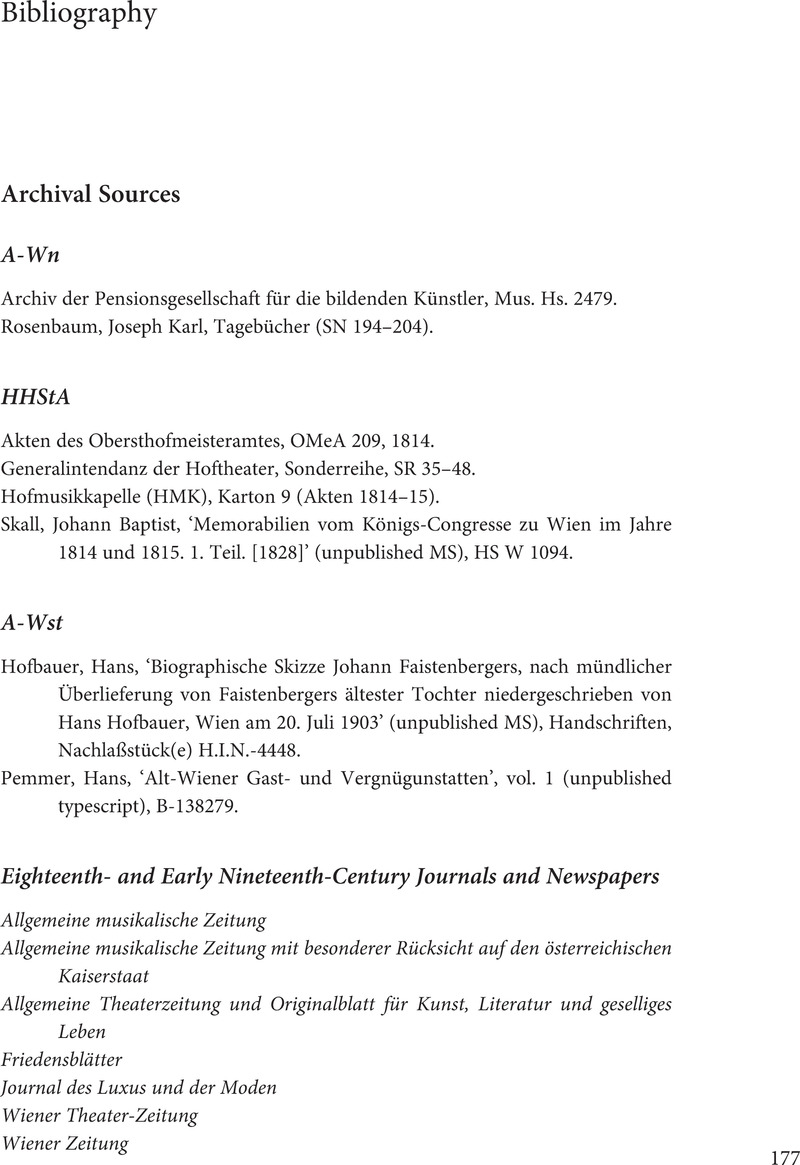Book contents
- The Viennese Ballroom in the Age of Beethoven
- The Viennese Ballroom in the Age of Beethoven
- Copyright page
- Dedication
- Contents
- Figures
- Tables
- Music Examples
- Acknowledgements
- Abbreviations
- Introduction
- 1 The Public Ball in Viennese Musical Life, 1770–1830
- 2 Early Viennese Waltz Dances
- 3 The Minuet
- 4 The Viennese Contredanse
- 5 Dance Arrangements from the Viennese Stage
- 6 Battle Waltzes
- 7 ‘The Congress Dances’
- Epilogue
- Appendix: Selected Original Musical Sources Consulted
- Bibliography
- Index
- References
Bibliography
Published online by Cambridge University Press: 25 November 2021
- The Viennese Ballroom in the Age of Beethoven
- The Viennese Ballroom in the Age of Beethoven
- Copyright page
- Dedication
- Contents
- Figures
- Tables
- Music Examples
- Acknowledgements
- Abbreviations
- Introduction
- 1 The Public Ball in Viennese Musical Life, 1770–1830
- 2 Early Viennese Waltz Dances
- 3 The Minuet
- 4 The Viennese Contredanse
- 5 Dance Arrangements from the Viennese Stage
- 6 Battle Waltzes
- 7 ‘The Congress Dances’
- Epilogue
- Appendix: Selected Original Musical Sources Consulted
- Bibliography
- Index
- References
Summary

- Type
- Chapter
- Information
- The Viennese Ballroom in the Age of Beethoven , pp. 177 - 188Publisher: Cambridge University PressPrint publication year: 2021



